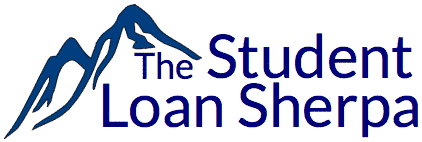Freelancing and self-employment are on the rise in the United States. Unfortunately, the unpredictable nature of self-employment can make student loan repayment a challenge. Most student loan repayment plans were designed for borrowers with a steady and predictable income. Those who don’t get the same paycheck every two weeks have to employ creative strategies to keep student debt under control and eventually pay it off.
Being self-employed or working as a freelancer does give student loan borrowers some distinct advantages. Income-driven repayment plans and certain tax strategies can be highly effective for managing debt while also planning for future financial stability.
Whether self-employment is a side hustle to supplement income or the primary source of earnings, there are several approaches borrowers can take to navigate the repayment process more smoothly and work towards becoming debt-free.
How does Income-Driven Repayment (IDR) work for the self-employed?
Income-Driven Repayment (IDR) plans, such as IBR, PAYE, and REPAYE, are are designed to make monthly student loan payments manageable. Rather than billing you based upon the total amount that you owe, the government bills you based on how much you earn.
This system, while beneficial for many, poses challenges for self-employed borrowers with fluctuating incomes.
Most borrowers address this issue by using their latest tax return to verify their income. When applying for an IDR repayment plan, borrowers can import their tax returns from the IRS and send income information directly to the Department of Education.
Borrowers who have a growing business will benefit from this approach to documenting income. Repayment calculations use earnings from the past year rather than looking at present or projected wages.
However, this approach is a bit more complicated for self-employed borrowers who are experiencing a downturn. Income-driven repayments based upon higher prior earnings can make the slump even more difficult to overcome. Borrowers experiencing this situation may want to immediately recalculate their payments to reflect their current income more accurately.
For self-employed individuals, proving income without a tax return can be tricky. These individuals typically don’t receive traditional paychecks; so, they will need to send a detailed letter to their loan servicer outlining their business income. Preparing for this requires understanding what loan servicers expect in an income verification letter. It is a good idea to call your loan servicer ahead of time to ask about the required contents of the income letter.
Generally speaking, loan servicers will look for the following in an income-verification letter:
- Where you work,
- Your occupation,
- How you get paid,
- How often you get paid,
- How much you were paid in the previous pay period,
- Expenses to run the business during the previous pay period, and
- How much revenue you generated in the previous pay period.
Because there isn’t a standardized form for this, borrowers will need to work closely with their loan servicer to keep them happy.
Be aware that loan servicers can sometimes give out inconsistent information, so don’t be surprised if it takes a couple of tries to complete a satisfactory income verification letter.
Balancing repayment of private student loans and federal student loans
Although income-driven repayment may be tricky at times, it provides excellent protection for the self-employed. Having student loans with the federal government is a great way to ensure that the difficult periods aren’t exacerbated by unmanageable student loan payments.
Borrowers with uncertain future earnings should avoid refinancing federal student loans with private lenders. Although private lenders may offer lower interest rates, no private lender can compete with the federal income-driven repayment plans’ flexibility and security.
The only time self-employed borrowers should consider refinancing their federal loans with a private lender is if they are very confident in their ability to repay the entire debt in full. Once a loan is privatized, it can never go back to being a federal loan. Thus, borrowers should give up the federal safeguards only if they’re sure they won’t need them.
Borrowers with both federal and private loans should prioritize eliminating private debt first. Even if the private loans are at a lower interest rate, eliminating those loans first might be the most strategic move for self-employed borrowers. Private student loans have a more rigid repayment structure and less forgiving lenders. Paying off this debt first can help create future financial flexibility.
All that being said, refinancing private student loans may be a wise decision. With private lenders like SoFi, Splash, and LendKey offering extended repayment terms (up to 20 years), borrowers may qualify for a lower interest rate and dramatically reduce their monthly payments. While paying more than the minimum is recommended, longer repayment terms provide valuable breathing room during leaner times. Extending the repayment time allows for better cash flow management and the pursuit of other financial goals.
How to refinance student loans for freelancers
In the circumstances when refinancing student loans makes sense, documenting self-employment income can present a unique set of challenges.
Student loan refinance companies each have their own methods for assessing applications. The formulas they use to decide who qualifies for a loan and at what rate (better known as underwriting criteria) are closely guarded secrets. Consequently, it is difficult to pinpoint which lenders are most favorable towards the self-employed.
Some companies may be very hesitant to lend money to a borrower who is dependent upon a fluctuating self-employment income, while others may focus only on the total annual income.
All borrowers should check rates with multiple lenders because it is the most effective way to find the lowest interest rate. This is especially true for the self-employed, as some lenders may judge them more harshly than others.
This site tracks lender rankings according to the companies most likely to approve an application and to offer the best rates. It is hardly an exact science and relies upon reader feedback, but the lenders at the top of the rankings should be a good starting point for finding the lowest interest rate.
Student Loan Forgiveness for the self-employed
Sadly, programs like Public Service Loan Forgiveness (PSLF) will likely not be an option. The focus on the “public service” aspect of PSLF is the nature of the employer rather than the nature of the work. For example, an ER doctor at a private hospital would not be PSLF eligible, but an ER doctor at a government or 501(c)(3) hospital would be qualified.
For freelancers and the self-employed, access to certain forgiveness programs like Public Service Loan Forgiveness (PSLF) is generally not an option. PSLF eligibility is tied to the nature of the employer, rather than the nature of the work. For example, an ER doctor working for a private hospital wouldn’t qualify for PSLF, but that same doctor working for a government or 501(c)(3) non-profit hospital would qualify.
Unless you’ve established a 501(c)(3) non-profit organization, self-employment work won’t qualify for PSLF, regardless of how much benefit you provide the community.
However, there’s a forgiveness option available to all borrowers, regardless of their employer. Borrowers who completes 20 or 25 years of income-driven repayment can have their remaining student loans forgiven.
Pursuing this type of forgiveness might not be the most cost-effective strategy for every borrower. With repayment spanning over two or more decades, the accumulated interest can substantially increase the total repayment amount. Furthermore, the IRS treats the forgiven debt as taxable income, which could lead to a hefty tax bill. Depending upon your income and loan balance, it may be more financially prudent to pay off the loan more aggressively.
Nevertheless, for borrowers facing a large debt burden coupled with a modest salary, this long-term forgiveness route could offer significant financial benefit.
Part-time freelancer student loan options
Borrowers working a second job have a unique opportunity to accelerate their student loan repayment.
If your primary 9-5 job covers your living expenses, any income earned from a side hustle could be dedicated to eliminating your student loan debt more rapidly. The financial stability provided by the first job mitigates many of the typical concerns self-employed individuals face. As a result, borrowers can attack the debt with less concern about maintaining future financial flexibility.
Depending on your financial goals and lifestyle preferences, once you’ve paid off the student loans, you have more options. For example, redirect the earnings from the second job towards retirement savings or you could quit the second job altogether.
While managing two jobs can be challenging, the potential rewards—becoming debt-free sooner and enhancing your ability to build wealth—can make the effort worthwhile.
Retirement hack: Start an Individual 401(k)
Student loan planning cannot be done in a vacuum. Borrowers should consider other financial goals, with retirement planning being a prime example.
For those who are self-employed, the dual role of employer and employee presents both challenges and opportunities, particularly in terms of retirement savings. While the government requires contributions to Social Security on behalf of both roles, it also opens up a huge advantage when it comes to the 401(k).
In a traditional 401(k), employees can contribute up to a maximum of $19,500 per year (as of the most recent update). Self-Employed individuals have the option of creating an Individual or Solo 401(k). This account allows for combined contributions both as an employee and an employer. Thus, the cap on contributions for an Individual 401(k) is much higher – up to $58,000 per year (as of the most recent update).
By using an Individual 401(k), the self-employed can lower their taxable income and, consequently, their Adjusted Gross Income (AGI). AGI is a consideration for IDR plan calculations. Thus, self-employed individuals can shield large sums of money from being used in their IDR calculations. This means they could save significantly for retirement during prosperous years without it affecting their minimum monthly federal student loan payments.
This strategy isn’t the quickest way to eliminating federal student loan debt, but it offers valuable monthly payment flexibility and increases retirement savings. Self-employed student loan borrowers should give careful consideration to how an Individual 401(k) could be used to accomplish their broader financial goals.
Other financial considerations
For self-employed individuals with student loans, balancing debt repayment with other financial milestones is critical.
Beyond just focusing on retirement and student loans, it’s important to account for significant life events like purchasing a home, marriage, and starting a family. Each of these decisions can significantly influence the best strategy for managing student loan debt.
Another factor to consider that often gets overlooked is the need to have an emergency fund. While it’s easy to overlook in the midst of planning for the future, it is crucial to have money set aside to cover the necessities. Difficult months can extend into years, and without a reserve to cover basic living expenses, the situation can become dire. Emergency funds serve a broader purpose than covering unexpected medical expenses; they provide a buffer that allows for financial flexibility and security in the face of unforeseen challenges. Prioritizing this safety net is a key component of a balanced and forward-thinking financial plan for anyone, especially those navigating the complexities of self-employment and student loan repayment.
Self-Employment at tax time
The interconnectedness of taxes, Income-Driven Repayment (IDR) plans, and retirement contributions adds layers of complexity to financial planning, especially for the self-employed. Navigating these waters to maximize the efficiency of every dollar can be daunting due to the intricate interplay between these financial aspects.
In this context, consulting a skilled tax professional can be an invaluable investment. While they may not specialize in student loan repayment strategies or retirement planning, a competent tax preparer can provide critical insights. They can address pivotal questions and guide you through various scenarios that impact your financial health.
Engaging in smart student loan planning often involves exploring numerous “what if” scenarios, and for the self-employed, these questions multiply. A tax professional can assist in crunching the numbers and steer you towards the most beneficial financial strategies.
Putting together a comprehensive strategy for freelancers
Student loans can, indeed, pose obstacles to achieving many financial goals and can make the pursuit of self-employment seem even more daunting. However, managing student loan debt while being self-employed is absolutely feasible.
The key strategy lies in prioritizing flexibility in how you handle your student loans. This approach ensures that debt repayment remains manageable and doesn’t hinder your ability to successfully navigate the challenges and rewards of being your own boss.





Hi, I am self employed attorney with approx. 56,000 in federal student loan balance and 51,000 in private student loans that I received between 2003 and 2005. My law school consolidated my federal loans in 2005 at a fixed rate of 2.875% held by a bank/guaranteed by the govt. with a payoff date 10 years down the line, consolidated again in 2021 with the DOE to take advantage of the Covid pause. The 4 private student loans are variable (currently sitting at approx. 5.5%) with a payoff date in early 2026. Lastly, I anticipate 10K in federal student loan forgiveness.
I am 63 with no dependents, self employed, rent in NYC/own no real estate and have about 18,000 in retirement savings in an SEP and a 401K-S-Corp retirement account. The S-Corp was created in 2021 and I am its sole owner.
M dilemma: If I minimize my income under the S-Corp., my min. federal student loan payments may be lowered but I won’t qualify for much of a residential mortgage. In the event of an illness or bankruptcy, the value of my home could be shielded from medical debt collectors/other creditors. Also, I do not know the impact of lower social security payments the last few years of working will have on my social security benefits in 7 years. I don’t know what to do. Please offer your feedback.
Diana,
It sounds to me like you are considering all of the relevant factors.
The only obvious thing I see is that you might want to refinance your private loans into a fixed-rate loan. With interest rates on the rise, your 5.5% variable-rate loan is only going to get more expensive.
Another thought that occurs to me is that some items that lower your income for student loan payment calculations may not lower your income for mortgage calculations. I’d suggest talking to a mortgage lender to see if your SEP or 401K-S-Corp contributions negatively impact your ability to buy a house. You might be surprised with what they have to say.
As for the social security component, it think the situation might be similar. I’m fairly certain that the government has calculators for gaming out what your social security income will look like as future earnings change.
Hello, thank you for this article. I believe for-profit public service employers (ie schools, hospitals) can be PSLF-eligible. See here: https://studentaid.gov/help-center/answers/article/what-not-for-profits-eligible-employers-for-pslf
Hi Detrick,
Thanks for taking the time to comment and share a link for reference.
However, I don’t think that link says what you are suggesting. Both the title and the top of the list of job descriptions use the term “not-for-profit”
If you or anyone else is trying to determine if their employer is eligible one of the best tools is the PSLF Help tool on studentaid.gov. You can enter your employer information and get the necessary forms to submit for certification. If there is any doubt, I highly recommend that you check it out.